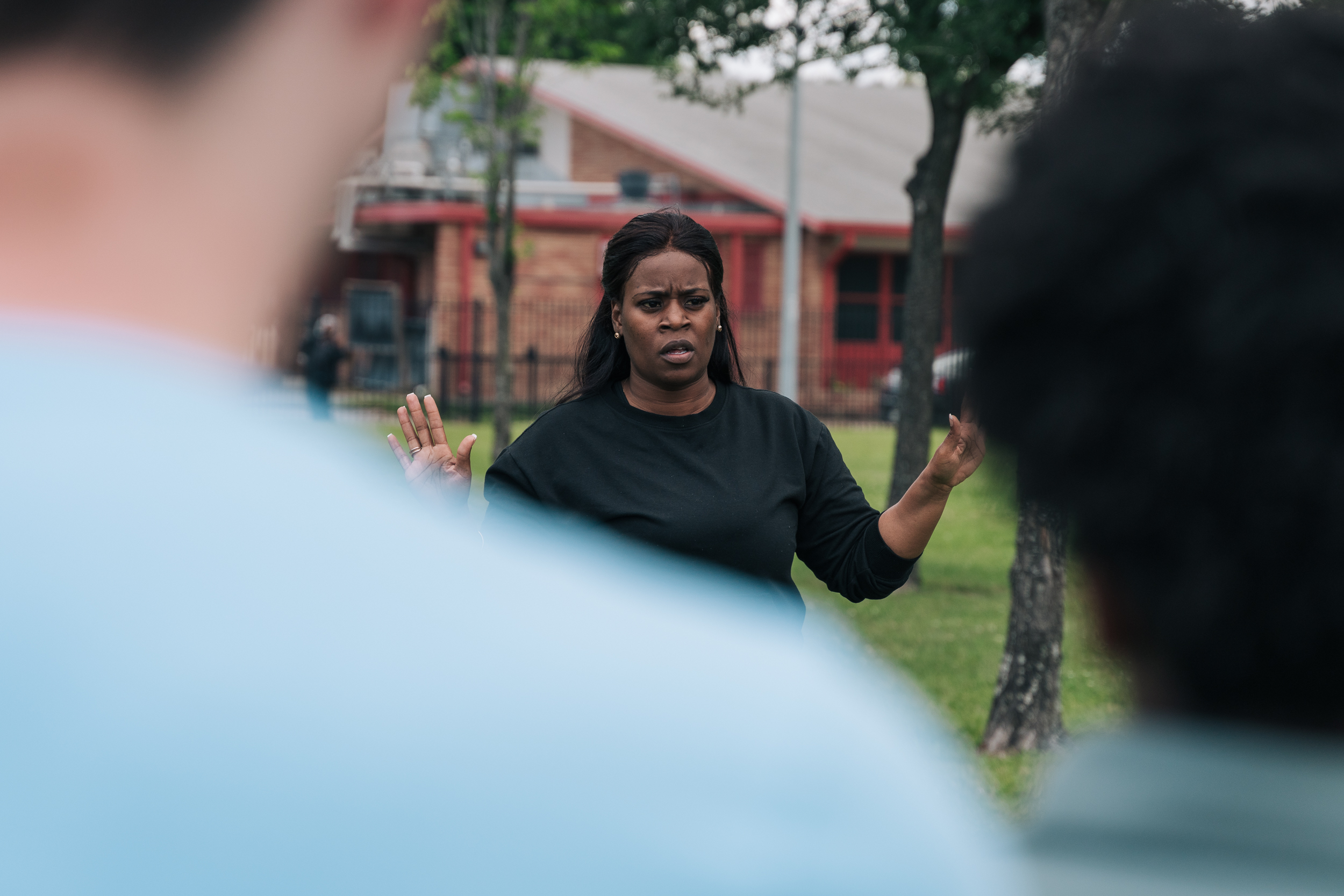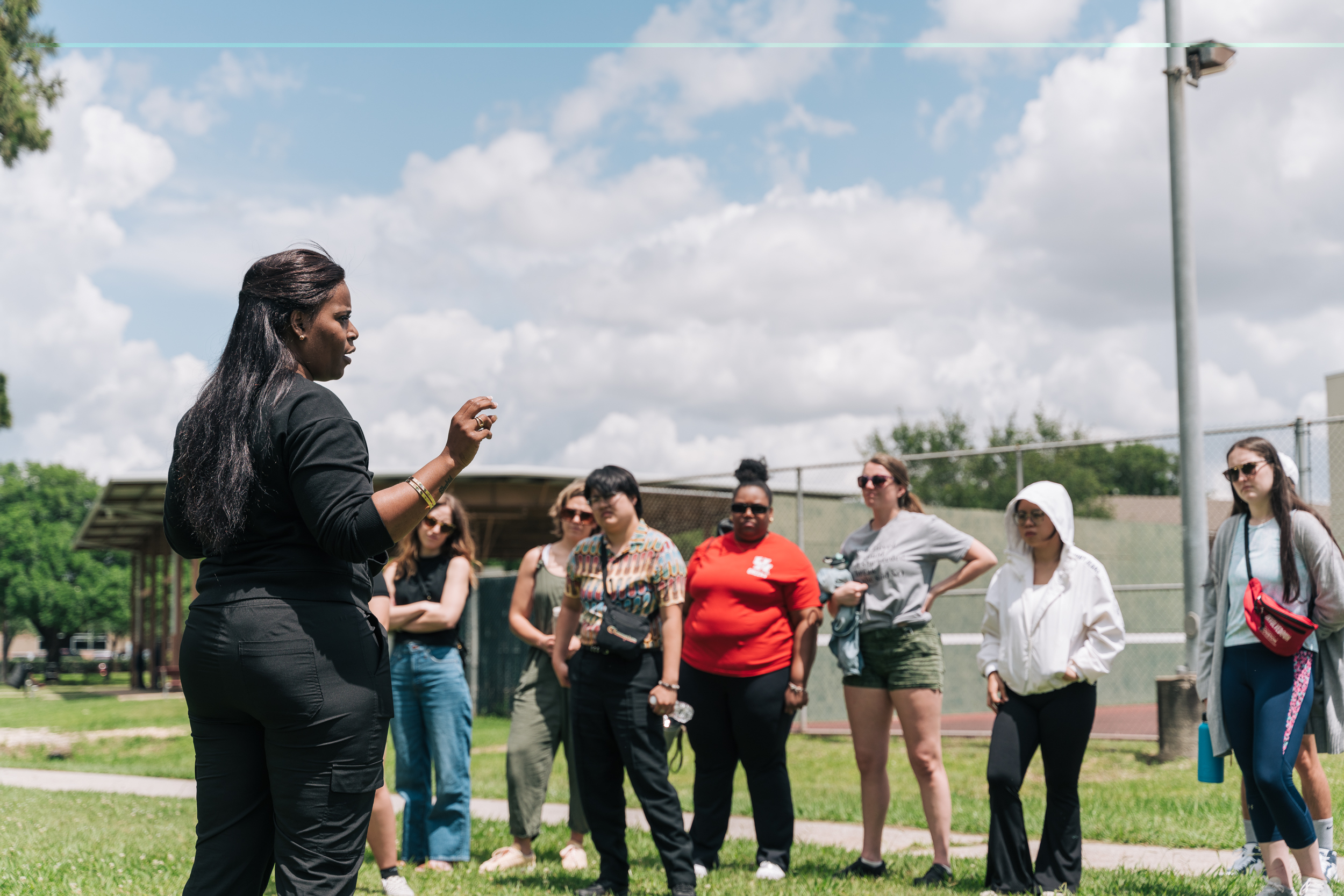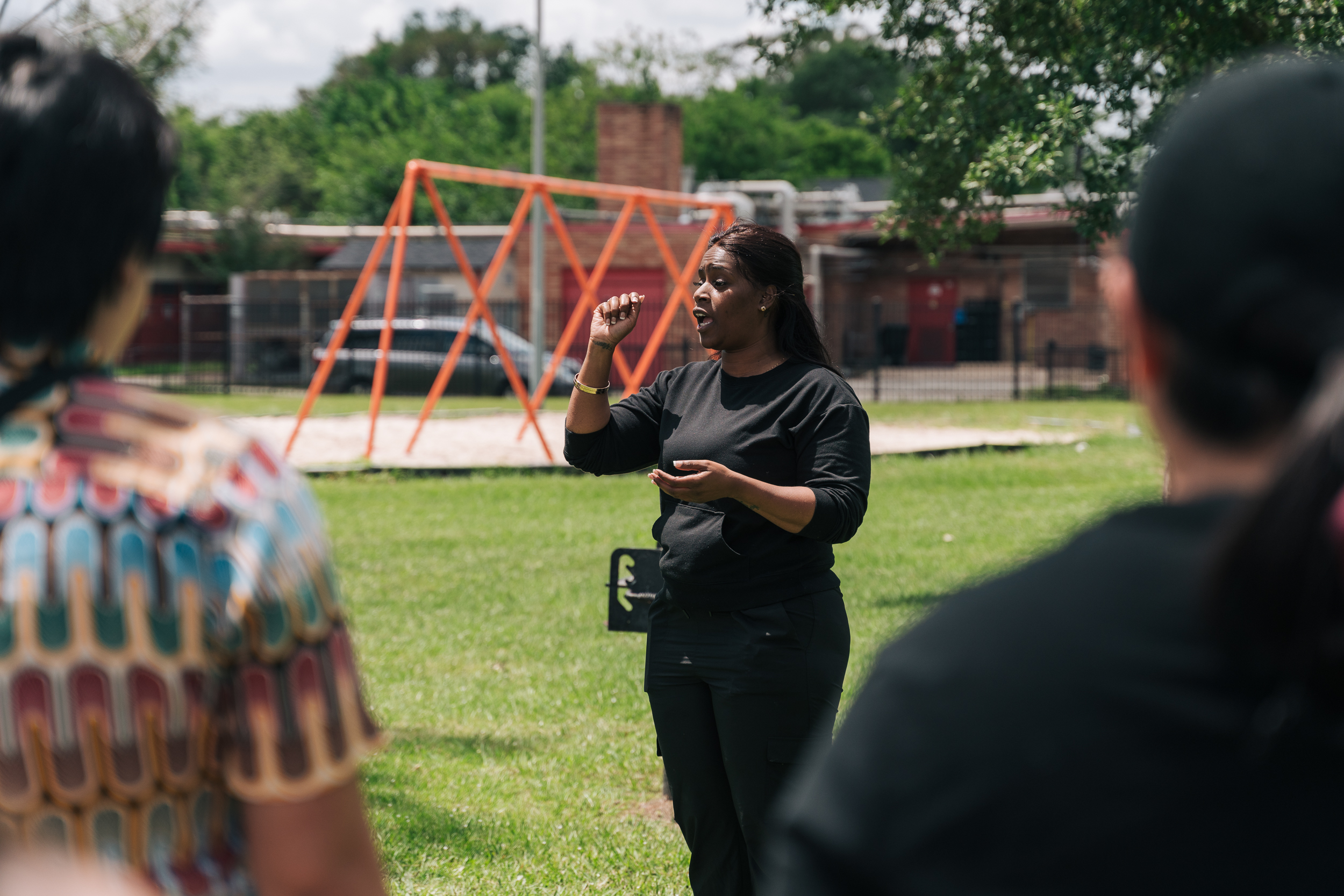|
Getting your Trinity Audio player ready...
|
This is the second in our occasional “Developing Divide” series, in which columnist Maggie Gordon tackles gentrification in Houston’s East End. If you have a story to share about East End gentrification, fill out our form at the end of this story.

Kendra London has been watching as the cranes dance and scaffolding stacks in the sky south of her home, constructing what will eventually be 1 million square feet of shiny, high-end housing, retail and office space. Situated on the north bank of the Buffalo Bayou — in the shaded part of the Venn diagram, where Fifth Ward and the East End overlap — the East River project, developed by Midway, promises to bring 60 city blocks worth of work-play-live real estate.

It’s slated to cost $2.5 billion to build. But London thinks the true cost to the East End and surrounding neighborhoods will be measured off the balance sheet — in who can afford to move in, and who will be forced to pack up and leave.
London’s family, like many of her neighbors, has held steady in the area for several generations.
There’s a photo album at her grandmother’s house, a few blocks north from the Midway project. London counts out loud as she describes its contents: “One, two, three, four generations of report cards — same address, same telephone number” sit inside.
She wonders: In the coming years, will the school that issued so many of those report cards — Wheatley High — even exist? She suspects her backyard will shift again. What she’s always known will fade further. These worries, as immediate as they feel inside London’s brain and heart, are still written in the future tense. But not for long.
For decades, the area east of downtown Houston has been one of the most affordable places to live inside The Loop. Fifth Ward, where London lives, was first settled by freedmen in the late 1860s, and officially earned the distinction of a ward in 1867. In the early 20th century, the neighborhood became a hub for Black culture; Wheatley was among the nation’s largest Black schools when it opened in 1927. The boom continued into the 1930s, with more than 40 Black-owned businesses thriving on Lyons Avenue, like Ross Mortuary, the funeral home that opened in 1938, which London still uses as a landmark when describing the part of Fifth Ward where she was raised. But then came the expansion of U.S. 59 and Interstate 10, cutting off Lyons and sending the area into decades of decline. These days, it’s impossible to ignore the economic differences between Fifth Ward and Houston as a whole.
In the 77020 ZIP code where Midway is hard at work building the first phase of what will be the massive East River project, the median income for a four-person family was $51,406 in 2021, according to the U.S. Census Bureau. That’s significantly lower than the area average. Across the Houston Metropolitan Statistical Area, the median income for the same sized family was nearly double that amount: $99,872.
And that exact disparity is about to take center stage as Midway prepares to bring elements of East River online in the coming months. Most of the project is still under construction, but so far a golf course and its accompanying restaurant, where you can buy a $20-plus burger, have opened. A few buildings over, Midway says 50 of the 360 units in its first mid-rise apartment building, The Laura, will be designated as “workforce housing” when it opens later this year.
Workforce housing is a term being used with increasing frequency across the rapidly gentrifying swath of the city east of downtown. Its definition is both nebulous and precise in the way it positions itself in contrast to other classifications, like “affordable housing,” which connotes not just housing that is affordable, but subsidized housing aimed to meet the needs of the poorest residents. Workforce housing allows developers to promote the idea that new projects are being priced inclusively — even when they’re well aware it doesn’t meet a neighborhood’s true needs.
“At the Laura, we’ve committed to having 15 percent of the units here as workforce housing,” says Anna Deans, Midway’s vice president of investment and development.
So while the 50 “workforce housing” units will undoubtedly be attainable for many Houston-area residents when they come online in a few months, the prices for the units, marketed as “exquisite modern living and luxury amenities” — which have yet to be disclosed — will likely be well out of reach for many who live just next door to the development.
I asked why.
“This was really the lowest that we could push the returns for our partners and investors while making the project still make financial sense to build without any subsidies” she said.
And East River isn’t alone in this.
“We don’t think you can stop gentrification,” Jeffrey Kaplan tells me on a sunny day in January as he and his colleagues at Concept Neighborhood walk me around the walkable community they’re working to establish in Second Ward. “We think there’s a way better way to do it.”
And that better way, he says, includes a commitment to workforce housing.
“We are under-providing workforce housing in our region,” says Kaplan, one of the principals at the development company Concept Neighborhood, which is quickly reshaping the East End with the promise of 1,000 workforce housing units coming online in the next couple years. “And the people who are moving here are the people that lived in Montrose 10 or 20 years ago, and cannot afford Montrose any more. So from just a sheer investor standpoint, we’re looking at the supply-and-demand misalignment. There’s just a need for more workforce housing.”
On an individual level, creating a relatively affordable landing place for those who have been priced out of Montrose sounds like a great solution. But zoom out and you’ll see it’s a second wave of displacement — the latter half of a one-two punch caused by Montrose’s gentrification.
London also sees misalignments in the market, though they’re markedly different than the ones Kaplan identifies.
“Our community is a community of multifamily culture. So we have multiple kids in one home,” she says. That’s not unique to London’s neighborhood, but it’s especially pronounced there. The average number of people living in a Houston household hovers right around the national rate — 2.57 per household locally, compared with 3.54 nationally, according to the Census. It’s significantly higher in The Laura’s ZIP code, where an average of 2.95 people live in each household.
“The homes that are being built now are studio homes and homes that are going straight up without a rooftop and without a backyard,” she says. “We’ve always had backyards in our community.”
The gap between the size and price range the community needs versus what is being built is stark. And it’s not the only disconnect arising as the former industrial lot is rebranded for a new wave of residents. Even the name of the waterfront the development is built upon is being rewritten in marketing materials, from a bayou to a river. The result, London says, is that she feels as though her concerns — often aired at community meetings with developers like Deans in attendance — have been ignored in the name of profit.
“Those of us that went to school and did everything we were supposed to do to come back and buy a home here, we can’t even afford it. A social worker can’t afford to live here. A counselor can’t afford to live here. A teacher can’t afford to live here,” London says, noting that these industries define the neighborhood’s true workforce. “We have been priced out.”
In the decade between 2011 and 2021, the share of households in the 77020 ZIP code spending $1,000 or more per month on housing has surged, from 14.5 percent to 24.4 percent, the Census Bureau reports. And with the addition of the high-gloss apartments London can see being added to the city skyline, that trend will only continue — and quicken, until London fears she will no longer recognize the community built over the community that built her.
She doesn’t begrudge the new neighbors sure to move in when The Laura comes online later this year. “If the new residents can afford to move in, I’m sure they did so by working hard. But those of us who have always been here have worked hard also,” she says. “And why do we have to prove who we are, when we were already here?”
Share your Houston stories with me. We can start on Twitter, Facebook and Instagram. Or you can email me at [email protected].





